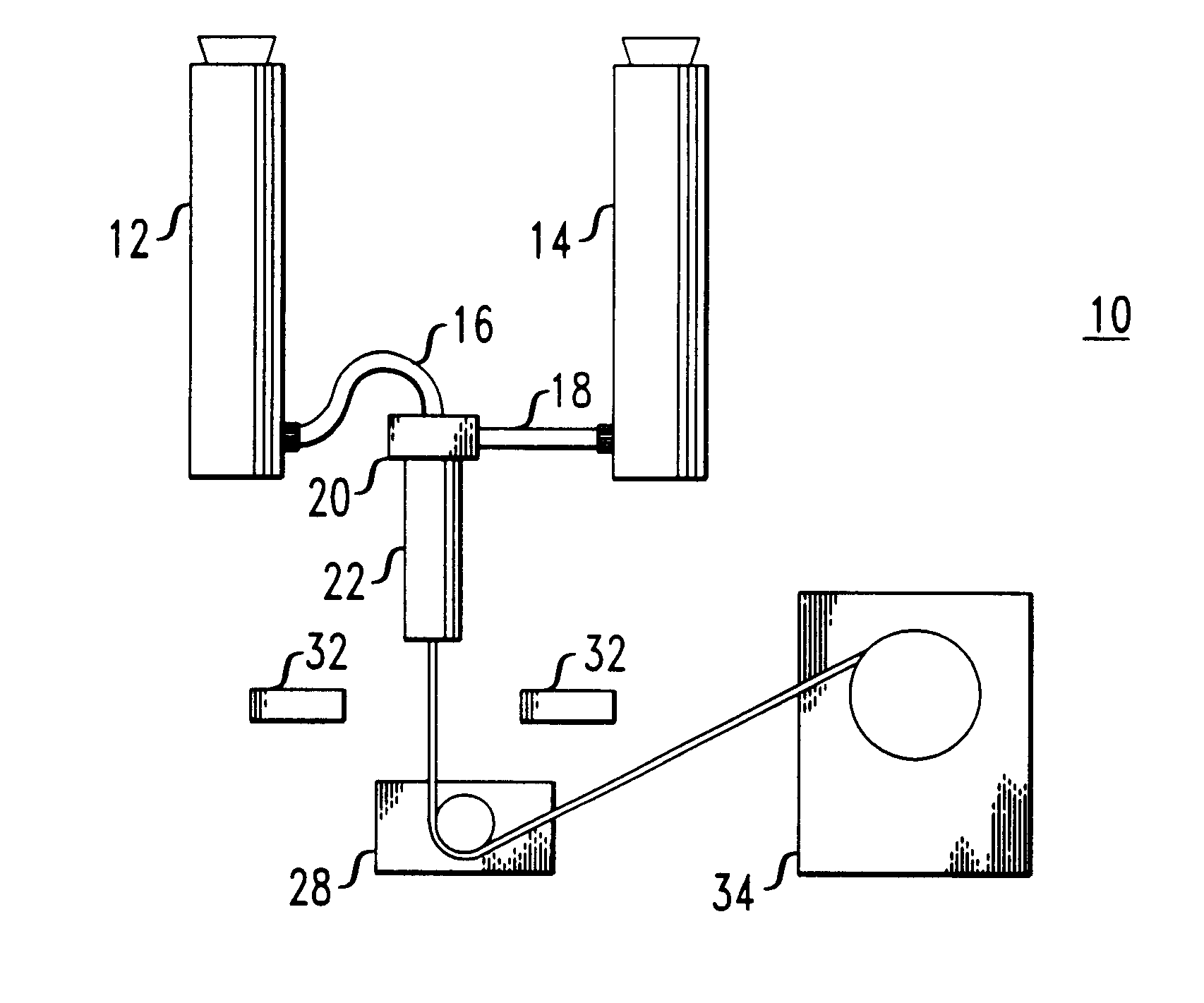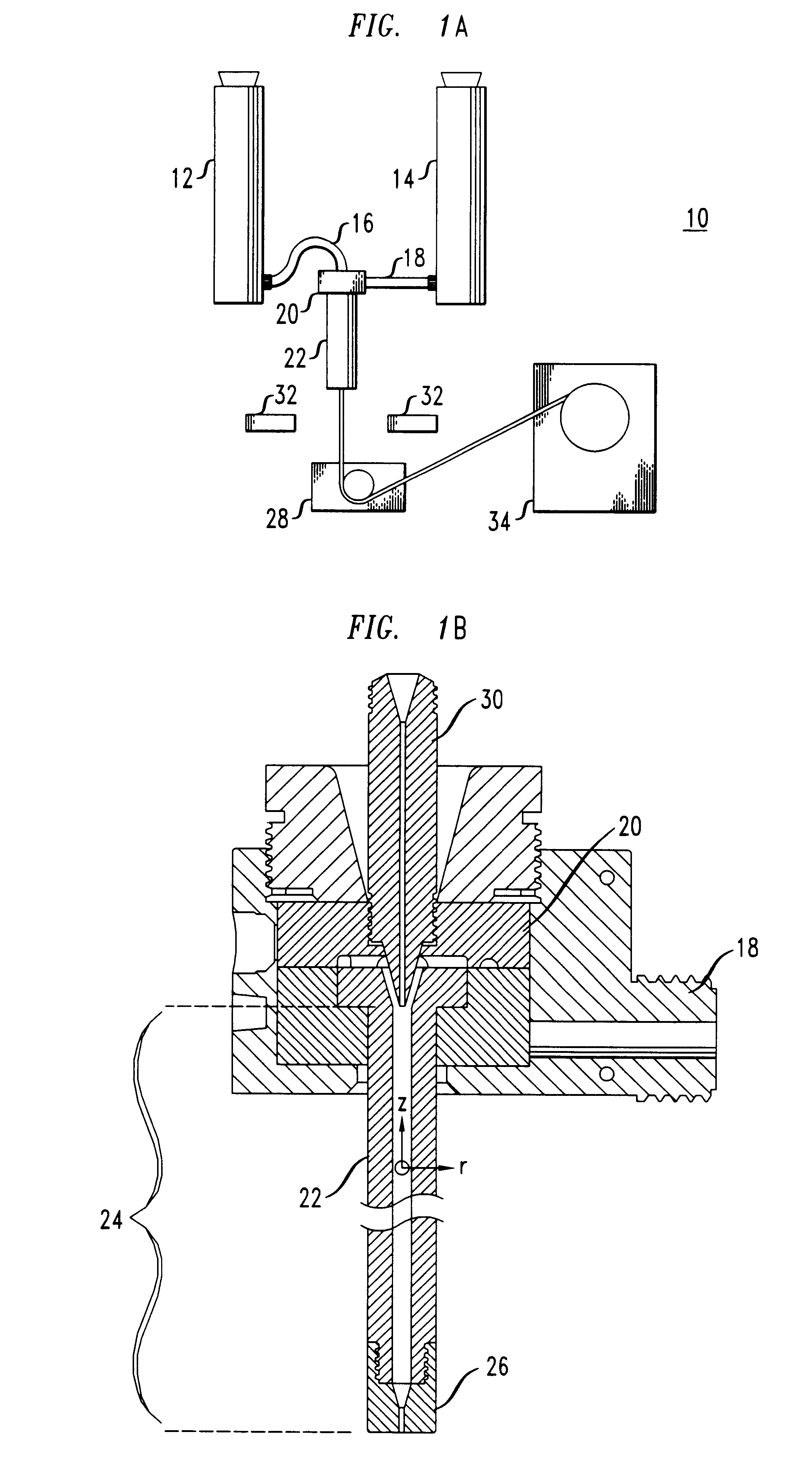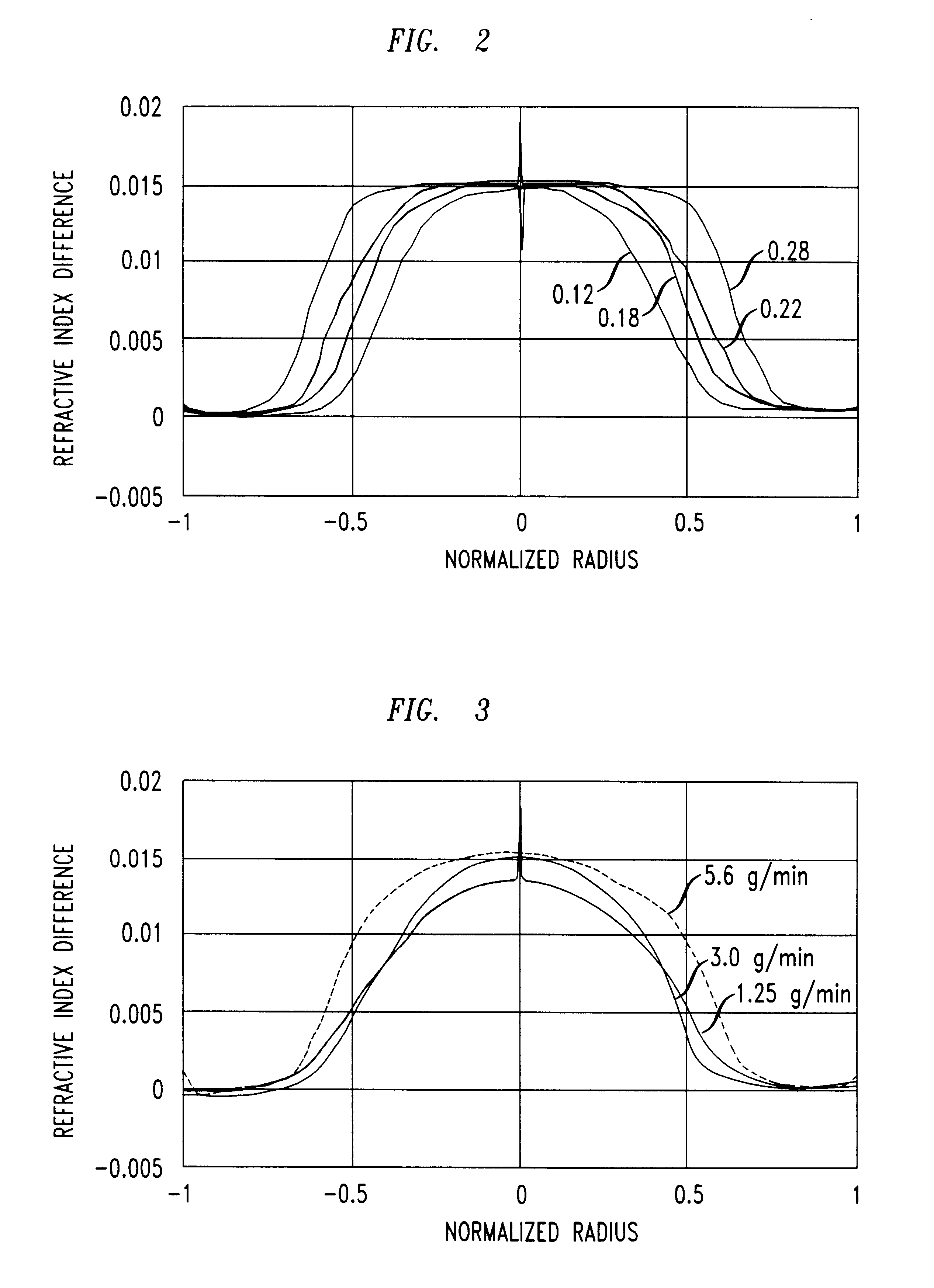Process for fabricating plastic optical fiber
a technology of plastic optical fiber and manufacturing process, which is applied in the direction of cladding optical fiber, instruments, other domestic articles, etc., can solve the problems of insignificant use of optical fiber, inconvenient installation, and inability to meet the requirements of cladding, so as to achieve gradual transition into the cladding region and narrow the width of the core region
- Summary
- Abstract
- Description
- Claims
- Application Information
AI Technical Summary
Benefits of technology
Problems solved by technology
Method used
Image
Examples
example 2
te
Another experiment was performed to determine the effect of output rate on the refractive index profile, keeping the diffusion zone length, the diffusion zone temperature and the core / cladding extruder rpm ratio constant. In this experiment the diffusion zone length was one meter, the diffusion zone temperature 250.degree. C. and the core / cladding extruder rpm ratio approximately 0.2. In all cases the temperature profile on the core extruder was set to deliver melt to the co-extrusion crosshead at 190.degree. C., while the profile on the cladding extruder was set to deliver material at 220.degree. C. The co-extrusion crosshead was set at 220.degree. C.
For the first fiber the core extruder rpm was 0.75, the cladding extruder rpm was 3.75 and the total output was 1.25 grams per minute. For the second fiber the core extruder rpm was 1.5, the cladding extruder rpm was 7.5 and the total output was 3.0 grams per minute. For the third fiber the core extruder rpm was 4.0 and the cladding ...
example 3
Zone Length
An experiment was performed to determine the effect of diffusion zone length on the profile of the GI-POF. For this experiment the co-extrusion crosshead temperature was set at 220.degree. C., the core extruder rpm at 1.5 and the cladding extruder rpm at 7.5. The diffusion zone temperature was set to 230.degree. C. for all lengths. For the first run the diffusion zone length was 0.67 meters. The fiber was drawn directly from the end of the diffusion section without using an exit die. Half of the diffusion section was then removed, leaving a diffusion zone length of 0.33 meters. A second fiber was drawn from this diffusion zone length. Finally the entire diffusion section was removed and a fiber was drawn directly from the co-extrusion crosshead.
As shown in FIG. 4, comparison of the three profiles shows that as the diffusion zone length is increased the refractive index gradient at the boundary between the core and cladding is reduced and made more gradual owing to the dif...
example 4
Zone Temperature
An experiment was performed to determine the effect of diffusion zone temperature on the profile of the GI-POF. The crosshead temperature was set at 220.degree. C. The temperature of the core melt entering the crosshead was set at 190.degree. C. The temperature of the cladding material entering the crosshead was 220.degree. C. For all runs the diffusion zone length was one meter, the output rate was approximately 6 grams / minute and the ratio of the core to cladding extruder screw rpm was held at 0.32 for all runs.
In the first run, the diffusion zone temperature was set at 230.degree. C., the cladding extruder rpm was 10.6 and the core extruder rpm was 3.4 which resulted in an output rate of 6.2 grams per minute. In the second run the diffusion zone temperature was set at 270.degree. C., and the individual core and cladding extruder rpm's were set at 3.2 and 10, respectively, keeping the ratio at 0.32 with an output of 5.9 grams / minute.
As shown in FIG. 5, the profile ...
PUM
| Property | Measurement | Unit |
|---|---|---|
| Length | aaaaa | aaaaa |
| Length | aaaaa | aaaaa |
| Length | aaaaa | aaaaa |
Abstract
Description
Claims
Application Information
 Login to View More
Login to View More - R&D
- Intellectual Property
- Life Sciences
- Materials
- Tech Scout
- Unparalleled Data Quality
- Higher Quality Content
- 60% Fewer Hallucinations
Browse by: Latest US Patents, China's latest patents, Technical Efficacy Thesaurus, Application Domain, Technology Topic, Popular Technical Reports.
© 2025 PatSnap. All rights reserved.Legal|Privacy policy|Modern Slavery Act Transparency Statement|Sitemap|About US| Contact US: help@patsnap.com



